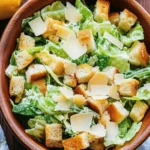Paella is one of Spain’s most iconic dishes, often enjoyed at festive gatherings and family celebrations. Originating from Valencia, this dish combines saffron-infused rice with a medley of fresh seafood, vegetables, and aromatic spices. Its vibrant colors and rich flavors make it not only delicious but also a stunning centerpiece for any meal.
What makes Paella so special is the way it captures both comfort and festivity in one pan. The harmony of smoky paprika, delicate saffron, and briny seafood creates a taste that is both rustic and refined. Whether shared at a family table or served during Latin-Hispanic Heritage Month celebrations, Paella is a dish that connects people to tradition, culture, and the joy of communal dining.
Full Recipe
Ingredients:
-
2 tablespoons olive oil
-
1 onion, finely chopped
-
3 cloves garlic, minced
-
1 red bell pepper, sliced
-
1 green bell pepper, sliced
-
2 cups bomba rice (or arborio rice)
-
4 cups chicken stock, warmed
-
1 teaspoon smoked paprika
-
1/4 teaspoon saffron threads (soaked in 2 tbsp warm water)
-
1 cup diced tomatoes (canned or fresh)
-
1/2 pound mussels, cleaned
-
1/2 pound clams, scrubbed
-
1/2 pound shrimp, peeled and deveined
-
1/2 pound squid rings
-
1/2 cup peas (fresh or frozen)
-
Lemon wedges, for serving
-
Fresh parsley, chopped, for garnish
-
Salt and pepper, to taste
Directions:
-
Heat olive oil in a large paella pan or wide skillet over medium heat.
-
Add onion and garlic, sauté until softened and fragrant, about 3 minutes.
-
Stir in the bell peppers and cook until slightly tender.
-
Add rice, stirring to coat with oil and vegetables. Cook for 2 minutes.
-
Pour in the warm chicken stock, smoked paprika, saffron with soaking water, and diced tomatoes. Stir well and season with salt and pepper.
-
Bring mixture to a simmer, then reduce heat to medium-low. Cook uncovered for about 15 minutes without stirring.
-
Arrange mussels, clams, shrimp, and squid evenly across the rice. Allow seafood to cook until mussels and clams open and shrimp turn pink, about 10 minutes.
-
Add peas on top and let everything simmer together for 5 more minutes until rice is tender and liquid is absorbed.
-
Remove from heat, cover with a clean kitchen towel, and rest for 5 minutes.
-
Garnish with fresh parsley and lemon wedges before serving.
Prep Time: 20 minutes | Cooking Time: 40 minutes | Total Time: 1 hour
Kcal: 420 kcal | Servings: 6 servings
Paella: A Latin and Hispanic Heritage Month Celebration Dish
When we talk about dishes that transcend their role as mere meals and transform into cultural icons, paella immediately comes to mind. This celebrated Spanish dish has its roots in Valencia but has traveled across the globe, becoming a symbol of tradition, festivity, and community. It is much more than rice and seafood simmered in saffron paella is a story told through flavors, a representation of heritage, and an invitation to gather around the table. During Hispanic Heritage Month, preparing paella offers a powerful way to honor the rich culinary traditions of Spain and Latin America, connecting history, identity, and celebration in every bite.
The Cultural Significance of Paella
Paella is not just about eating; it is about experiencing a culture. In Spain, particularly in Valencia where the dish originated, paella is a communal event. Families and friends gather around a large paella pan, known as a “paellera,” sharing not only food but also stories, laughter, and traditions passed down through generations. This sense of community is at the very heart of Hispanic culture, where meals are more than sustenance they are the glue that binds family and community together.
During Hispanic Heritage Month, preparing and enjoying paella is an homage to these shared traditions. It emphasizes the importance of family gatherings, cultural identity, and pride in Hispanic roots. By making this dish, people across the world get the chance to celebrate not only Spanish cuisine but the greater heritage of Latin and Hispanic cultures that value togetherness and storytelling at the dining table.
The Evolution of Paella
Though paella is most famously linked to Valencia, it has gone through countless variations and adaptations as it spread across regions and continents. Originally, paella was a farmer’s dish, created with rice, beans, and whatever meats or vegetables were available. Rabbit, chicken, and even snails were common additions. The incorporation of seafood became more prominent in coastal areas, where mussels, clams, shrimp, and squid transformed the dish into what many now recognize as the classic seafood paella.
Each region in Spain has embraced its own variation, and Latin America has also influenced the dish with local flavors. For example, in some Caribbean countries, paella might be prepared with plantains or accented with spices unique to that region. This adaptability makes paella a perfect symbol of Hispanic Heritage Month, as it showcases the fusion of tradition, environment, and creativity across the Hispanic world.
The Star Ingredients That Define Paella
Even though we won’t dive into a full breakdown of the ingredients here, it’s important to acknowledge the essential elements that give paella its identity. At its heart lies bomba rice, a short-grain rice that absorbs liquid without becoming mushy, allowing it to soak up the rich flavors of broth, spices, and seafood. Another cornerstone is saffron, the golden spice that imparts both color and a delicate, floral aroma. This spice has historically been as prized as gold and is what elevates paella to a dish of celebration.
Seafood and proteins add layers of flavor and texture, while smoked paprika delivers the depth and smokiness characteristic of Spanish cooking. Vegetables, particularly peppers, tomatoes, and peas, bring vibrancy and balance. The result is not simply rice with toppings, but a harmonious medley where every bite tells a story of its cultural and regional influences.
Paella as a Celebration Dish
Across Spain and Latin America, paella is rarely a dish made for one. Its size and method of preparation lend themselves to communal enjoyment. A paellera pan is wide and shallow, designed not only for even cooking but also for sharing. It is not unusual to see massive pans of paella being prepared outdoors during festivals, with crowds gathering around, waiting to share in the feast.
This celebratory nature aligns beautifully with Hispanic Heritage Month. Paella represents the joy of togetherness, the spirit of festivity, and the recognition of cultural pride. Serving paella at a family gathering, a community event, or even at a personal dinner party during this month is a way of bringing people together and honoring traditions that have stood the test of time.
The Global Impact of Paella
Though firmly rooted in Spanish history, paella has become a global ambassador for Hispanic cuisine. Restaurants worldwide proudly feature paella on their menus, often adapting it to include local ingredients and preferences. This flexibility has allowed paella to remain relevant across cultures while still maintaining its Spanish essence.
For those celebrating Hispanic Heritage Month outside of Spain or Latin America, paella offers an accessible yet authentic way to connect with Hispanic culture. Cooking and sharing paella is a gesture of appreciation — an acknowledgment of the beauty, diversity, and richness of Hispanic traditions.
Paella’s Role in Hispanic Heritage Month
Hispanic Heritage Month is a time to recognize and celebrate the vast contributions of Hispanic and Latin people to culture, history, and society. Food plays an integral role in this celebration, as it is one of the most tangible and joyous ways to connect with culture. Paella, with its vibrant flavors and festive spirit, embodies the ideals of this month. It reflects not only the ingenuity of Hispanic cooks but also the values of family, hospitality, and cultural pride.
Including paella in your Hispanic Heritage Month celebration is not just about enjoying a delicious meal. It is about recognizing the artistry of Hispanic cuisine, the heritage behind it, and the legacy it continues to build. It allows us to honor the past while savoring the present, creating memories that will carry forward into the future.
Conclusion:
Paella is far more than a dish; it is a cultural experience that has stood the test of time. With its origins in Valencia, its evolution through regional variations, and its adoption worldwide, paella has become a dish that transcends borders while maintaining a strong sense of identity. Its saffron-stained rice, seafood, and vibrant vegetables create more than a meal they create a connection to history, culture, and community.
As we celebrate Hispanic Heritage Month, paella serves as a perfect representation of Hispanic pride, resilience, and festivity. It embodies the values of gathering, sharing, and honoring tradition. Adding paella to your celebrations means more than preparing a meal; it means inviting a piece of Hispanic culture into your home and honoring its deep roots.
So, as you lift a forkful of golden, flavorful paella, remember that you are not just tasting food. You are tasting centuries of tradition, the warmth of family gatherings, and the essence of Hispanic culture itself.






